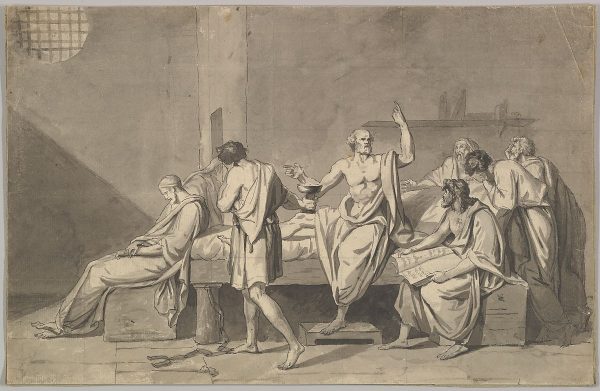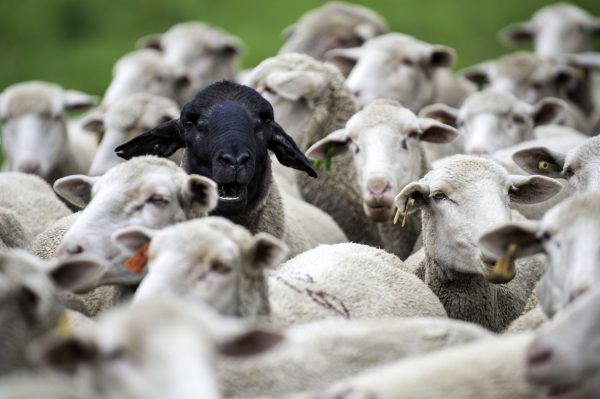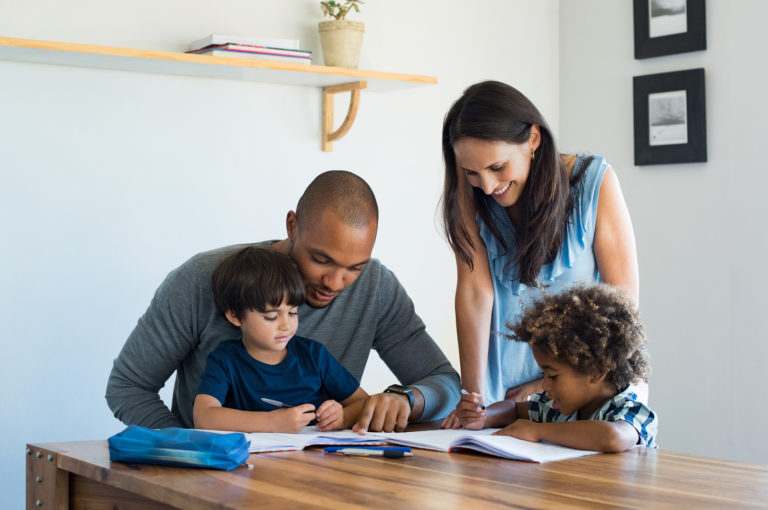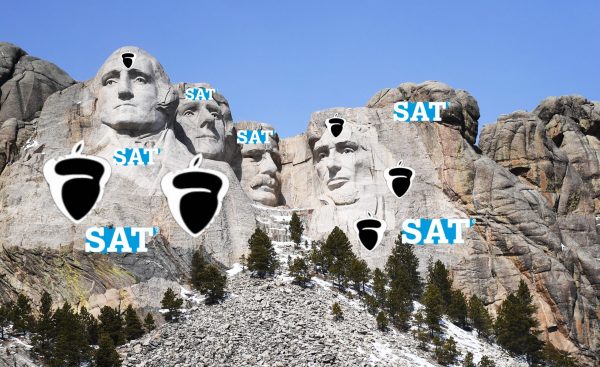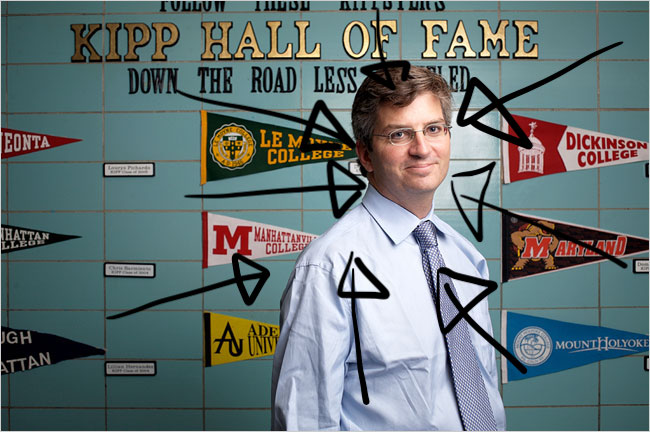And that’s a good thing.
What Will Become of Our Schools?
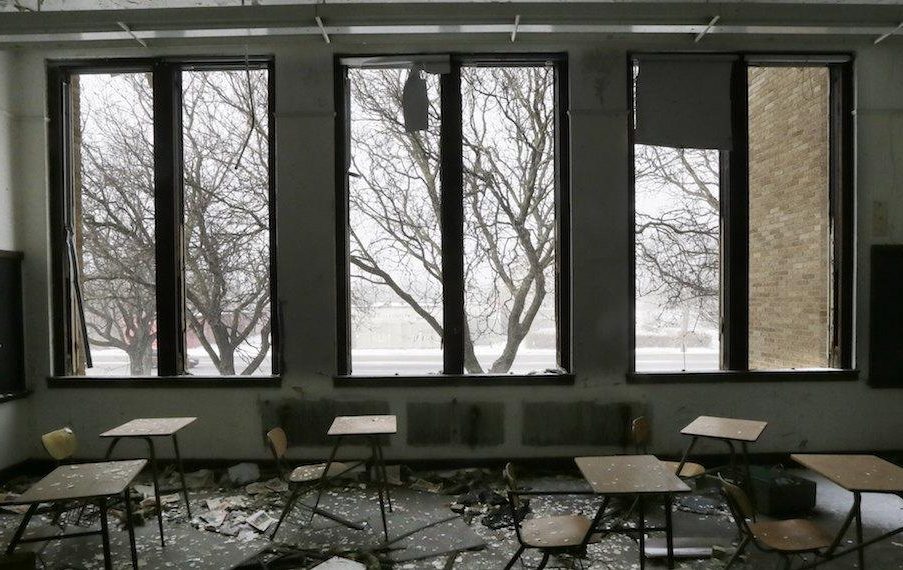
Education is in for an overhaul. It won't all be good.
After hospitals and healthcare, perhaps no other part of American life has been more affected by the Chinese coronavirus disaster than education.
From the conservative perspective—one which recognizes that today’s public education system, even in ordinary times, is not preparing students to one day shoulder the responsibilities of American citizenship—what challenges and silver linings should we expect to emerge from the age of the virus?
Elementary and Secondary Education Prior to COVID-19
“If a nation expects to be ignorant and free, in a state of civilization, it expects what never was and never will be,” quipped Thomas Jefferson, one of the principal advocates for then-controversial public education. The American public school system was born, not from the need for a highly-trained workforce, but from this seed of purpose. Man may be born with natural rights, but it takes education to teach him to be a responsible, self-governing citizen of a republic.
By this fundamental measure, America’s public system, even before the virus upended schools across the nation, is a dismal failure. Out of the United States’ largest 100 school districts, not a single one lists the name of our country or the word “patriotism” in their mission statements. Big surprise then, that fewer than one in five adults under the age of 45—nearly 90% of whom were “educated” in public schools—can pass the basic citizenship test my parents took in order to become naturalized citizens.
Worse than what we’re not learning is what we are: less than a year after the introduction of the ridiculously inaccurate and mercilessly debunked 1619 Project in the New York Times, the Pulitzer-endorsed, Common Core-compliant teaching materials based on it have already made their way into more than 3,500 schools in all 50 states. But the 1619 Project is more of a capstone than new material; Howard Zinn’s A People’s History has long been a staple of history classrooms across the country. After decades of lessons on the injustice of the American way of life in public schools, it should be no surprise that their graduates are taking to the streets to pull down any and all symbols representing the United States.
This reversal of public schooling’s basic mission is particularly dangerous as America plays host to one of the highest levels of immigration in our history. The common school system was originally centralized, copying the Prussian model, in order to Americanize the children of immigrants. There’s a strong case to be made it is now un-Americanizing not only those children, but the native-born as well.
Then the virus hit. By mid-March, the vast majority of school districts had shut their doors, for fear that children—fortunately largely spared the symptoms of COVID-19 for the most part—would become vectors for the disease and infect their parents and grandparents.
As the situation currently stands as of this writing, fifty million students in America and their families—nearly all—have found themselves learning at home, as districts close to halt the spread of the virus. Many are already bracing for a reduced or dramatically altered new school year in the fall. This period, while ultimately temporary, will affect the education system and the experiences of students for years to come.
American Education Post-Virus
Though millions of families are currently navigating education at home, we must be careful not to expect that this situation will produce a huge permanent swing in the numbers of homeschooling families. But we are seeing evidence that the number of families homeschooling in the fall will be much higher than usual. In North Carolina, for example, so many applications were sent in that the state government server, designed to handle a more modest number, crashed.
That homeschooling uptick will likely be particularly pronounced among families whose children have special needs and who find direct, at-home instruction is actually easier than fighting the system tooth and nail to implement Individualized Education Programs (IEPs). Also among the likely candidates for more permanent homeschooling are children for whom school was a social stressor due to high-violence environments, intense bullying, or other peer issues.
The reality is what most families are now experiencing isn’t “homeschooling”—it’s school at home. Worksheets, packets, and (if they’re lucky, as only a small minority of schools offer them) Zoom classes are the tools of the trade. Add in the upheaval and stress of the larger crisis, as well as the isolation required by social distancing, and the situation is pushing parents—themselves often working from home—to the limits of their patience. By contrast, many homeschooling families work within co-ops, participate in neighborhood or community group activities, do lots of reading aloud, and spend hours of the day outside, all activities that are more likely to be permitted in Phase II or Phase III states than large brick-and-mortar school openings.
Despite how far they’ve fallen since the days of “let the infant in the cradle lisp Washington,” brick-and-mortar schools are still among the primary applicators of social glue across America. This crisis has kicked out the pillars from under one of the cultural fixtures that connects generations of Americans to one another. In many small towns, high school football games still bring the entire population together. Our schools have always been about more than academics, and their function in forming citizens involves more than teaching the workings of American government: at their best, they’re flight simulators for the real thing. Families miss bundling their children onto the school bus, and they’re right to do so.
But everything good can be taken to the extreme, and the social function of schools has warped over the decades, past in loco parentis and into replacing families altogether. The biggest practical problems to be managed as a result of school closures have had nothing to do with learning. Only a tiny fraction of schools were delivering live online instruction as the school year headed toward its close, but by the same time, 82% were finding ways to continue food service for the millions of children who now rely on public schools, not their families, for meals. Testing to ensure basic proficiency in mathematics and reading was (correctly) waived quickly and without much argument, but as New York Governor Andrew Cuomo constantly reminded us in his coronavirus briefings, businesses cannot fully reopen without schools to provide childcare for working parents.
It is possible this crisis will produce a permanent seismic shift in homeschooling numbers, but even if homeschooling numbers double, the vast majority of students will return to in-person schooling at some point. Long-term, what should conservatives look for? A more subtle—but perhaps, in the long run, more important—cultural shift.
The United States is already among the developed nations with the most robust private and homeschooling sectors. In France, homeschooling is highly regulated, to the point where a government inspector will show up at your house to ensure you’re teaching the “correct” view of the French Revolution. In Germany, it’s outright forbidden, a policy enthusiastically suggested by some in academia here.
But in the United States, in perhaps a more attenuated way than is ideal, parents are still considered the primary directors of their children’s educations. This belief is manifest in parents’ participation within the public schools (in the form of PTAs and parent-teacher conferences) as much as in their ability to avail themselves of private options if they so choose. A deep vein of traditionalism runs through the American conception of education that hasn’t yet been fully eradicated by more than a century of Horace Manns and John Deweys.
The pandemic may deepen this salutary American instinct. Millions of parents are getting their first real look behind the public school curtain, especially in regard to curriculum. It might sound outlandish, but in many school districts in the U.S., even basic review of what your child is going to learn in the upcoming year is tightly controlled. It’s not uncommon for syllabi and materials to only be available in person, on campus, or even during specific hours or times of the year. Parents often find out about far-Left sexual material, anti-American “social studies” lessons, or climate change hysteria only when their child asks a question about something he or she learned at school. In many districts, parents have been reduced to looking over their children’s shoulders at the computer as these indoctrinations progress, and many have written about their discomfort with what they’ve seen and heard.
The deeper silver lining opportunity for those who think the public school system is failing to shape citizens and statesmen is a cultural re-centering of parents in their rightful role as primary educators. While the vast majority of families will likely continue to hire schools and teachers to do the day-to-day education of their children, a good many will have their eyes opened to the kinds of lessons their children are really learning during the school day.
The U.S. isn’t as far gone in outsourcing educational direction as Germany or France, but that family-centered learning muscle has substantially atrophied since the days when Thomas Jefferson imagined universal public education as a necessity for the republic. While no one wishes for this kind of crisis, it may provide some much-needed exercise for parental involvement in education.
Challenges for Private Schools
The fallout from the virus will also present serious challenges for private schools, which currently serve about 10% of our elementary and secondary education students. As previously mentioned, the U.S. has a comparatively robust private sector. Private schools in America are not merely independent in the obvious sense of operating without public funding, but in the deeper and more important sense that they offer true alternatives to what is being taught in the public system.
If history is any guide, we can expect major financial pain and contraction among private schools as the economic recession—likely depression—deepens and families on the margins can no longer afford tuition. And as service collection and donations plunge, school networks intertwined with religious organizations are already being forced to close their doors. There is a very real threat that we may exit this crisis with far fewer alternatives of a truly independent and religious character than when we entered.
What can be done to prevent this? In the immediate term, relief packages must be equally distributed among school sectors, and not go only to public schools. The CARES Act grants governors a $3 billion purse to dole out as they see fit to educational institutions, and private schools are eligible for the already-depleted PPP loan program. Unfortunately, private schools, unaccustomed to lining up for the dole, have mostly not vigorously competed for the limited dollars available through these programs.
In states with private school choice programs, these programs may become a lifeline to schools that may have previously only had one or two students on scholarship. State legislatures should consider allowing mid-year enrollment in these programs and expanding eligibility requirements. Many programs strictly limit by income, but these days a family’s last tax return may have little to do with their current post-shutdown financial situation.
Public schools will feel major financial pain and budget cuts as well as state coffers suffer a lack of tax revenue during shutdowns. But contra the union narrative, this is the first time they will be belt-tightening in well over three decades, and they should be looking to reverse their decades-long trend of hiring compliance officers and administrative bureaucrats rather than increasing teachers’ wages. In some states, as few as 11 cents on the dollar spent by the taxpayer actually make it into the classroom.
Contrastingly, virtually all school choice programs educate children at a fraction—sometimes as little as a third—of the per-pupil cost at the public schools. States should make good use of these programs to balance their books while giving families added choice and flexibility. At the end of the day, public schools have the advantage over their private counterparts in that they’re guaranteed to get paid, even if they have to take a haircut.
Conservatives should be prepared, also, to protect the nature of private schools themselves. As more private networks become dependent on public money, whether through direct aid or through scholarship programs, the call to squash their independent character will rise. Already states have tried to use school choice programs as a tool to pressure religious schools to fall in line with leftwing doctrine about sexuality and identity. It’s easy to imagine aid programs constructed in such a way as to force Christian schools to “accommodate” transsexual or transgendered students and eviscerate their religious character. We must protect the private educational sector from the agonizing choice between preserving their principles and beliefs and keeping their doors open for students and families who rely on their instruction.
It will be a disaster if American private schools come through this crisis, not only depleted in numbers, but looking more like those in France, where the only way so-called “independent” schools can survive financially is by accepting a government contract to teach an approved curriculum. Much of Catholic education in the nation of Joan of Arc, for example, operates almost under the table, with a wink and a nod from government inspectors who “fail” to notice religious books and instruction.
Far from the stereotype of the academically high-performing prep school, the vast majority of America’s private schools are not primarily offering a more rigorous version of the same product on offer in the public system. Average private tuition is around $11,000 per year, significantly lower than the average per-pupil spending in public schools, which is more than $15,000. What these schools are offering is a true alternative: a different curriculum, culture, and mission. We must preserve that which makes private education different along with the schools themselves.
Universities Should Go to the Back of the Line
Institutions of higher learning are vastly different from K-12 schools, both in their pre-COVID state and in the way they have suffered the effects of the pandemic.
In the months and perhaps years to come, universities have and will likely to continue to adapt to distance learning more easily than elementary and secondary schools, in part because—all evidence to the contrary aside—they teach adults. Twenty-year-olds are capable of far more self-direction, and many universities have already been exploring online coursework for years.
Real disruption is more likely to hit admissions departments rather than those already enrolled; SAT and ACT administrations have already been canceled this year, and high school grades will be more unreliable than usual given the current situation. This presents an opportunity for smaller testing companies that already have an online option, like the Classic Learning Test which currently serves liberal arts institutions like St. John’s College and Hillsdale College, along with religiously-affiliated universities. Cracks in the left-leaning College Board’s monopoly on test-based gatekeeping will be a welcome outcome if they persist.
On the flip side, as more universities switch to “holistic,” test-optional schemes, there is more opportunity for soft affirmative action and perks for the children of the wealthy and well-connected, further cementing colleges in their suspected role as elite sorting mechanisms rather than true institutions of higher learning.
But while they will adapt better than many other businesses to the crisis in the short-term, colleges and universities face major financial challenges—perhaps insurmountable ones—starting in the fall, especially as more universities announce they will not be returning to regular on-campus operations.
Even prior to the current crisis, federal dollars through Department of Education-issued student loans are the lifeblood of the entire university sector. And what a sector it is: of the more than 4,000 colleges and universities in the United States, only 1400 of them are even ranked on the U.S. World & News Report.
The existence of these thousands of universities is easier to understand when one realizes that every high school graduate is a walking government check, sometimes of six figures, for any university who will take him. Federal interference in the student loan market, which has its roots in the War on Poverty machinations of the Great Society, has both expanded the number of universities and colleges greatly, and put downward pressure on the academic preparedness of the students accepted. Who cares if Johnny is reading at a 7th-grade level? He and his government loan look like college material to many institutions.
The result is a six-year graduation rate of only 60%, meaning four in ten students take on debt and never obtain the income boost of earning a degree. Worse, the explosion in degrees granted has put everyone on a credentialing treadmill as more employers that used to require only a high school diploma start adding “bachelor’s preferred” at the bottom of job listings. “Free money”—money taxpayers are ultimately on the hook for given that as many as four in ten student loans were expected to be in default by 2023, before factoring in the current situation—has not only created the student debt crisis, but made it much harder to climb the ladder for those without four-year degrees, who still comprise a majority of Americans.
Bearing the broken fundamentals of the higher education market in mind, universities are now facing a major drop in enrollment due to the present crisis. The federal money train is, at least, inexorably hitched to student attendance, and both the virus itself and attendant economic devastation is changing many families’ September plans. With the entire higher education sector built precariously on a government cash house of cards, hundreds of universities may close if enrollment falls precipitously. Current projections range from a 10 to 30% drop in new freshmen for the coming year.
What have universities done during this uncertain time? Buckle down and cut the administrative fat and campus facility largess that have characterized the past decade’s competition for government-funded students? To date, there is little evidence of cost-saving measures. More perniciously for the country as a whole, universities are still hiring six-figure salaried deans of various “diversity” or “inclusion” departments. Even with a financial sword of Damocles hanging over their heads, universities show no sign of giving up on the hard-Left activism that has earned them the enmity of overwhelming majorities of Republicans and independents in polls.
Nothing about this situation screams “bailout-worthy,” yet the U.S. taxpayer has already been fleeced for dollars beyond the $1.7 trillion in outstanding student loans. Universities scored a hefty $14.5 billion bailout in the CARES Act, but organizations representing them warn they will need another $50 billion to stabilize the sector. Harvard University, whose contribution to the COVID debates has been an article urging state legislators to ban homeschooling, will receive $9 million in federal aid despite its $41 billion endowment. In a time when so many are suffering real economic pain from the effects of the virus, this largesse would be obscene even if universities were fulfilling their twin promises of prosperous career tracks and highly-educated citizens rather than acting as “woke seminaries.”
With millions of Americans suffering, universities should absolutely be at the back of the line, and Republicans must stand fast against inevitable future requests for bailouts. If thousands of American businesses must shutter permanently in response to this crisis, universities must bear their portion of the load without additional special help from the taxpayers who have already financed their entire business model. In fact, a contraction of a university sector that has already grown disproportionately on the backs of mechanics, janitors, and electricians may be a net positive for the country, as the majority of Americans believe.
An Uncertain Future
Challenging times lie ahead. As in many other parts of our lives as we endure this once-a-century pandemic, it’s hard to predict what American education will look like two years from now. In the coming years of what will be high-stakes policymaking and governance, likely with fewer resources to go around, conservatives should be looking to first principles—to the original purpose of education and learning in a constitutional republic—to guide them through.
The American Mind presents a range of perspectives. Views are writers’ own and do not necessarily represent those of The Claremont Institute.
The American Mind is a publication of the Claremont Institute, a non-profit 501(c)(3) organization, dedicated to restoring the principles of the American Founding to their rightful, preeminent authority in our national life. Interested in supporting our work? Gifts to the Claremont Institute are tax-deductible.
We must re-train our students in the art of seeing the highest and best.
A Warning to Calvin University.
Making education domestic again.
Teaching the test has made our country lose its way.
Americans must demand their states save these essential schools.


